AN-OTHER
This graduation project looks at the drama of subjectivation (the process of becoming a subject) as it is worked out in the psychoanalytic theories of French psychoanalyst, Jacques Lacan.
We identify with the reflection of the self in our immediate environment, an internalisation of a mirror in our foremost caretakers or friends. The self is therefore only reflected in others. There is an imagined intimacy with it. The sense of self is not without a frame of reference. The reference acts as a yardstick against which we mark our social recognition. The self mediated by the reflection or the visual imagery is thus an imaginary function and our social recognition merely a symbolic one.
The oval mirror, mask and the veil used in the project draws on such identifications and tropes. The self is trapped in the other and the paradoxical object of desire is at the core of self realisation. Our unconscious fantasies revolve around this object —both the lost object and the cause of desire as an object. Our satisfaction is not in the ultimate attainment of some final goal, but in the unending process of seeking ones-self and encircling this lost object.
The visual imagery in the project explores the aforementioned ideas primarily in the form of a video (titled An-Other) and constructed images. In order to situate Lacan’s theories in a more concrete, socio-cultural register, the family albums of the participants are worked on and also used as references for the constructed images to undercut universalist assumptions According to me, they are specific. Other media that was used includes an interactive mirror installation, a projection mapping and a staged performance. The work is a philosophical enquiry of psychoanalysis, examined through the metaphor of spatial identification.
Q. How has educationlmentoring changed your practice over time? What were your expectations of the course you were involved with?
My journey at our institute (NID) has been exciting, given we have the freedom to explore self-driven projects. The programme relies on the understanding of the history of the medium and sensitises us to a wealth of photographic expressions that the visiting facultylmentors bring in. A lot of our work ended up in the format of a book or multimedia installations including videos, projections, sound and performances. I believe that with such an education one understands how to ‘place’ one’s work more than anything. Institutional learning can lend a discerning eye but it can be limiting as well; one has to be a rebel.
Q. Why is photography the medium of your choice and what are the practical and theoretical challenges you have faced?
Maybe I am more comfortable with photography because of my education in it. I have always been fascinated by the nature of light in paintings and cinema. In the graduation project, I ended up exploring the moving image. Inherently our visual sense is appropriated by the exposure to cinema. Cinema however offers a set visual grammar in the form of its strict compositional rules and framing. But photography also constantly feeds back to a more multi-dimensional medium like video with its visual language. It is a challenge to break away from the safe grounds of a cinematic visual sense, and on the other hand, there is a lot to explore visually in the moving image which pulls me towards it. Theoretically I also feel our exposure can be more inclined towards our roots in ‘Indian’ photography history. Practically it is a challenge to unearth such documentations or archives. As part of the dissertation, the students are expected to locate the oldest traces of photography history in their local environs, which helps.
Q. How do you think photography will change in the future and what will be the role of the University/Festival/Workshop?
Photography has grown from being a reproduction tool or the evidence of a physical reality. I believe that it will move towards realising the intangible. I feel it will forever evolve in an utopian attempt to reproduce or realise the specular nature of memory.
In the immediate future, it will simply speak with other artistic domains and lead to a more immersive experience. The materiality, text and sound associated with the images adds to the sensory stimulus. It will explore new forms of dissemination. The self published photo books and social platforms like Instagram offer an alternate curation to that of an exhibition. Photography is now more vernacular in its reach, as well as its origin.
Q. What aspects should be included in photography courses to lend criticality?
Studies around contemporary visual culture along with art history should be an integral part of the courses. Images are fast taking over words. There is an abundance of imagery in our social life today. A leap of the imagination with words requires distance and discerning. With the immediacy of the images produced today and its integrated presence in our hves, our own imagination ironically takes a back seat. Images no longer remain the source of a critical vision. An informed, cross-referenced reading of images as part of research helps advance the narrative of image outlay, and writing a formal dissertation develops our critical faculties. But sensitisation to other literary aspects could help look at an image from a postcolonial, gender, psychological or semiotic lens, and that remains important today.
All images from the series An-other NID Gandhinagar, Dec 2017 Digital

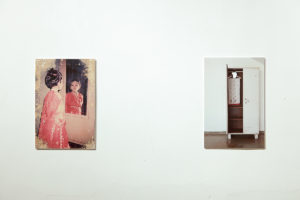

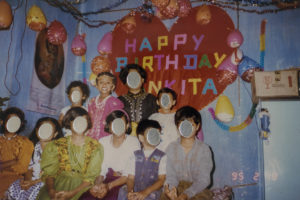


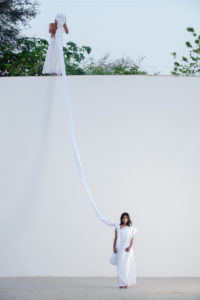
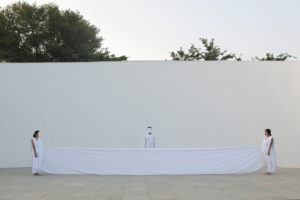

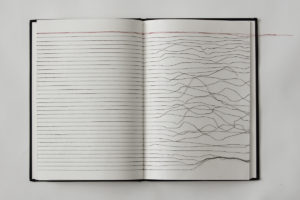
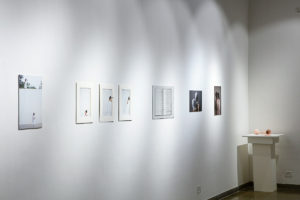

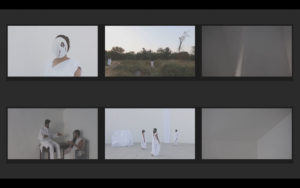
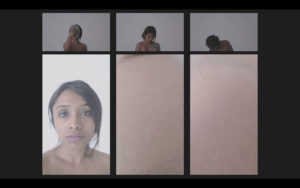
LEFT: Mohit Bhatia, An-other Digital Go Pro Projected video snapshots, NID Gandhinagar, Dec 2017